A method of synthesizing the best FTN signal, which is more compact in frequency spectrum than a signal based on RRC pulses. Use the criterion of maximum energy concentra...
Abstract:
The achievement of the boundary values of spectral efficiency is associated with the development of methods for generating and receiving signals with a compact spectrum. ...Show MoreMetadata
Abstract:
The achievement of the boundary values of spectral efficiency is associated with the development of methods for generating and receiving signals with a compact spectrum. The reason is a constant increase in the capacity of existing communication channels caused by an increase in the volume of transmitted information. Moreover, the allocated frequency bandwidths have natural limitations, and they are almost all reached. The effective way to approach the boundary values of spectral efficiency is the application of spectrally efficient signals, such as FTN (Faster-Than-Nyquist) signals. This article proposes to synthesize optimal FTN signals that are more compact in the spectrum than RRC (root raised cosine) pulses-based signals. The criterion of maximum energy concentration in the occupied frequency bandwidth and the constraint on the cross-correlation coefficient are used to solve the optimization problem. The contribution of this work is the optimization of FTN signal shape. The obtained optimal FTN signals provide a 24% increase in spectral efficiency compared to the RRC pulses-based signals. At the same time, the energy loss stays almost unchanged. To the best of authors’ knowledge, this is the first case when the frequency bandwidth reduction is achieved at practically no energy loss. The simulation modeling in channels with additive white Gaussian noise and fading channels is done with regard to the FTN-SC-FDE (Faster-Than-Nyquist - Single Carrier system with Frequency Domain Equalization) structure. The optimal FTN signals presented in this work can be used to increase the spectral efficiency of satellite broadcasting systems, such as DVB-S2/S2X.
A method of synthesizing the best FTN signal, which is more compact in frequency spectrum than a signal based on RRC pulses. Use the criterion of maximum energy concentra...
Published in: IEEE Access ( Volume: 8)
Funding Agency:

Institute of Physics, Nanotechnology and Telecommunications, Peter the Great St.Petersburg Polytechnic University, St. Petersburg, Russia
Sergey B. Makarov was born in Leningrad, Russia, in 1948. He received the Ph.D. degree in technical science from the Leningrad Polytechnic Institute, Russia, in 1977, and the D.Sc. degree, in 1991. He is currently a Professor with the Higher School of Applied Physics and Space Technologies, SPbPU. He is the author of more than 300 publications in the field of wireless communications. His current research interests include...Show More
Sergey B. Makarov was born in Leningrad, Russia, in 1948. He received the Ph.D. degree in technical science from the Leningrad Polytechnic Institute, Russia, in 1977, and the D.Sc. degree, in 1991. He is currently a Professor with the Higher School of Applied Physics and Space Technologies, SPbPU. He is the author of more than 300 publications in the field of wireless communications. His current research interests include...View more
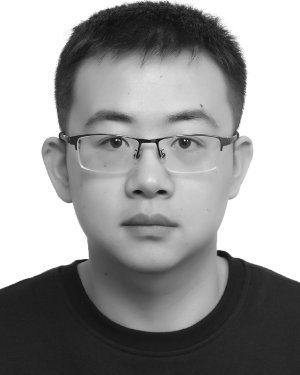
College of Information and Communication Engineering, Harbin Engineering University, Harbin, China
Mingxin Liu was born in Changchun, Jilin, China, in 1995. He received the B.S. degree in information engineering from Jilin University, in 2018. He is currently pursuing the Ph.D. degree in information and communication engineering with Harbin Engineering University. His research interest is the optimization of 5G wireless communication systems.
Mingxin Liu was born in Changchun, Jilin, China, in 1995. He received the B.S. degree in information engineering from Jilin University, in 2018. He is currently pursuing the Ph.D. degree in information and communication engineering with Harbin Engineering University. His research interest is the optimization of 5G wireless communication systems.View more
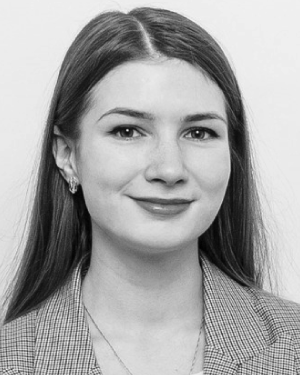
Institute of Physics, Nanotechnology and Telecommunications, Peter the Great St.Petersburg Polytechnic University, St. Petersburg, Russia
Anna S. Ovsyannikova was born in Sochi, Russia, in 1997. She received the B.S. degree in infocommunication technologies and communication systems from Peter the Great St.Petersburg Polytechnic University (SPbPU), Saint Petersburg, in 2018, where she is currently pursuing the M.S. degree with the Higher School of Applied Physics and Space Technologies. Her research interests include 5G, optimal signals, spectral efficiency...Show More
Anna S. Ovsyannikova was born in Sochi, Russia, in 1997. She received the B.S. degree in infocommunication technologies and communication systems from Peter the Great St.Petersburg Polytechnic University (SPbPU), Saint Petersburg, in 2018, where she is currently pursuing the M.S. degree with the Higher School of Applied Physics and Space Technologies. Her research interests include 5G, optimal signals, spectral efficiency...View more
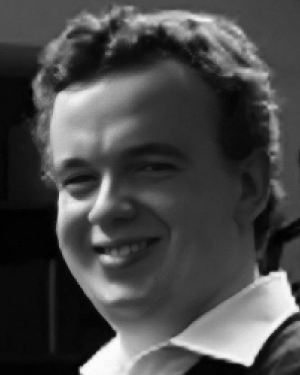
Institute of Physics, Nanotechnology and Telecommunications, Peter the Great St.Petersburg Polytechnic University, St. Petersburg, Russia
Sergey V. Zavjalov was born in Leningrad, Russia, in 1988. He received the B.S., M.S., and Ph.D. degrees from the Peter the Great St.Petersburg Polytechnic University (SPbPU), Russia, in 2009, 2011, and 2015, respectively, all in communication systems engineering. He is currently an Associate Professor with the Higher School of Applied Physics and Space Technologies, SPbPU. His research interests include digital communica...Show More
Sergey V. Zavjalov was born in Leningrad, Russia, in 1988. He received the B.S., M.S., and Ph.D. degrees from the Peter the Great St.Petersburg Polytechnic University (SPbPU), Russia, in 2009, 2011, and 2015, respectively, all in communication systems engineering. He is currently an Associate Professor with the Higher School of Applied Physics and Space Technologies, SPbPU. His research interests include digital communica...View more
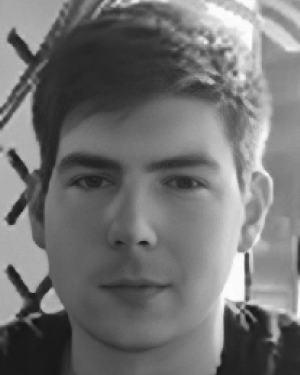
Institute of Physics, Nanotechnology and Telecommunications, Peter the Great St.Petersburg Polytechnic University, St. Petersburg, Russia
Ilya I. Lavrenyuk was born in Kazakhstan, in 1995. He received the B.S. and M.S. degrees from the Peter the Great St.Petersburg Polytechnic University, Russia, in 2016 and 2018, respectively, all in communication systems engineering. He is currently pursuing the Ph.D. degree. His research interests include digital communications and spectrally efficient signaling.
Ilya I. Lavrenyuk was born in Kazakhstan, in 1995. He received the B.S. and M.S. degrees from the Peter the Great St.Petersburg Polytechnic University, Russia, in 2016 and 2018, respectively, all in communication systems engineering. He is currently pursuing the Ph.D. degree. His research interests include digital communications and spectrally efficient signaling.View more
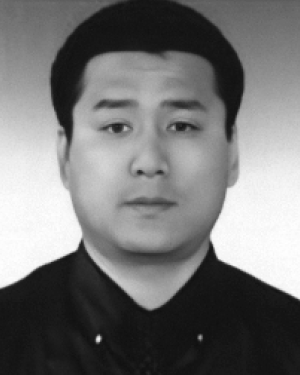
College of Information and Communication Engineering, Harbin Engineering University, Harbin, China
Wei Xue (Member, IEEE) received the B.S. and M.S. degrees in communication and information system from Harbin Engineering University, Harbin, China, in 1995 and 2001, respectively, and the Ph.D. degree from St. Petersburg State Polytechnical University, Russia, in 2007. He is currently a Professor with the Department of Information and Communication Engineering, Harbin Engineering University. His current research interest...Show More
Wei Xue (Member, IEEE) received the B.S. and M.S. degrees in communication and information system from Harbin Engineering University, Harbin, China, in 1995 and 2001, respectively, and the Ph.D. degree from St. Petersburg State Polytechnical University, Russia, in 2007. He is currently a Professor with the Department of Information and Communication Engineering, Harbin Engineering University. His current research interest...View more
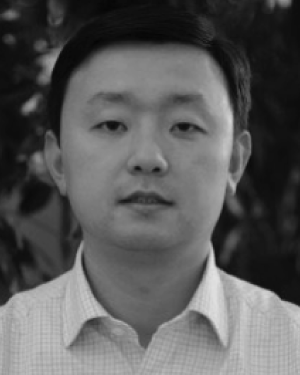
College of Information and Communication Engineering, Harbin Engineering University, Harbin, China
Junwei Qi received the B.S. degree in electrical information science, in 2003, and the M.S. and Ph.D. degrees in communication and information system from Harbin Engineering University, China, in 2008 and 2012, respectively. His research interests include wireless communication, signal detection, and machine learning.
Junwei Qi received the B.S. degree in electrical information science, in 2003, and the M.S. and Ph.D. degrees in communication and information system from Harbin Engineering University, China, in 2008 and 2012, respectively. His research interests include wireless communication, signal detection, and machine learning.View more

Institute of Physics, Nanotechnology and Telecommunications, Peter the Great St.Petersburg Polytechnic University, St. Petersburg, Russia
Sergey B. Makarov was born in Leningrad, Russia, in 1948. He received the Ph.D. degree in technical science from the Leningrad Polytechnic Institute, Russia, in 1977, and the D.Sc. degree, in 1991. He is currently a Professor with the Higher School of Applied Physics and Space Technologies, SPbPU. He is the author of more than 300 publications in the field of wireless communications. His current research interests include spectrally efficient signaling, optimal signals for wireless communications, meteor-burst and UWB communication networks, the Industrial Internet of Things.
Sergey B. Makarov was born in Leningrad, Russia, in 1948. He received the Ph.D. degree in technical science from the Leningrad Polytechnic Institute, Russia, in 1977, and the D.Sc. degree, in 1991. He is currently a Professor with the Higher School of Applied Physics and Space Technologies, SPbPU. He is the author of more than 300 publications in the field of wireless communications. His current research interests include spectrally efficient signaling, optimal signals for wireless communications, meteor-burst and UWB communication networks, the Industrial Internet of Things.View more

College of Information and Communication Engineering, Harbin Engineering University, Harbin, China
Mingxin Liu was born in Changchun, Jilin, China, in 1995. He received the B.S. degree in information engineering from Jilin University, in 2018. He is currently pursuing the Ph.D. degree in information and communication engineering with Harbin Engineering University. His research interest is the optimization of 5G wireless communication systems.
Mingxin Liu was born in Changchun, Jilin, China, in 1995. He received the B.S. degree in information engineering from Jilin University, in 2018. He is currently pursuing the Ph.D. degree in information and communication engineering with Harbin Engineering University. His research interest is the optimization of 5G wireless communication systems.View more

Institute of Physics, Nanotechnology and Telecommunications, Peter the Great St.Petersburg Polytechnic University, St. Petersburg, Russia
Anna S. Ovsyannikova was born in Sochi, Russia, in 1997. She received the B.S. degree in infocommunication technologies and communication systems from Peter the Great St.Petersburg Polytechnic University (SPbPU), Saint Petersburg, in 2018, where she is currently pursuing the M.S. degree with the Higher School of Applied Physics and Space Technologies. Her research interests include 5G, optimal signals, spectral efficiency, and signal processing.
Anna S. Ovsyannikova was born in Sochi, Russia, in 1997. She received the B.S. degree in infocommunication technologies and communication systems from Peter the Great St.Petersburg Polytechnic University (SPbPU), Saint Petersburg, in 2018, where she is currently pursuing the M.S. degree with the Higher School of Applied Physics and Space Technologies. Her research interests include 5G, optimal signals, spectral efficiency, and signal processing.View more

Institute of Physics, Nanotechnology and Telecommunications, Peter the Great St.Petersburg Polytechnic University, St. Petersburg, Russia
Sergey V. Zavjalov was born in Leningrad, Russia, in 1988. He received the B.S., M.S., and Ph.D. degrees from the Peter the Great St.Petersburg Polytechnic University (SPbPU), Russia, in 2009, 2011, and 2015, respectively, all in communication systems engineering. He is currently an Associate Professor with the Higher School of Applied Physics and Space Technologies, SPbPU. His research interests include digital communications, spectrally efficient signaling, UWB signals, and WiFi.
Sergey V. Zavjalov was born in Leningrad, Russia, in 1988. He received the B.S., M.S., and Ph.D. degrees from the Peter the Great St.Petersburg Polytechnic University (SPbPU), Russia, in 2009, 2011, and 2015, respectively, all in communication systems engineering. He is currently an Associate Professor with the Higher School of Applied Physics and Space Technologies, SPbPU. His research interests include digital communications, spectrally efficient signaling, UWB signals, and WiFi.View more

Institute of Physics, Nanotechnology and Telecommunications, Peter the Great St.Petersburg Polytechnic University, St. Petersburg, Russia
Ilya I. Lavrenyuk was born in Kazakhstan, in 1995. He received the B.S. and M.S. degrees from the Peter the Great St.Petersburg Polytechnic University, Russia, in 2016 and 2018, respectively, all in communication systems engineering. He is currently pursuing the Ph.D. degree. His research interests include digital communications and spectrally efficient signaling.
Ilya I. Lavrenyuk was born in Kazakhstan, in 1995. He received the B.S. and M.S. degrees from the Peter the Great St.Petersburg Polytechnic University, Russia, in 2016 and 2018, respectively, all in communication systems engineering. He is currently pursuing the Ph.D. degree. His research interests include digital communications and spectrally efficient signaling.View more

College of Information and Communication Engineering, Harbin Engineering University, Harbin, China
Wei Xue (Member, IEEE) received the B.S. and M.S. degrees in communication and information system from Harbin Engineering University, Harbin, China, in 1995 and 2001, respectively, and the Ph.D. degree from St. Petersburg State Polytechnical University, Russia, in 2007. He is currently a Professor with the Department of Information and Communication Engineering, Harbin Engineering University. His current research interests include underwater and underground current field communications, efficient spectrum modeling, and simulation.
Wei Xue (Member, IEEE) received the B.S. and M.S. degrees in communication and information system from Harbin Engineering University, Harbin, China, in 1995 and 2001, respectively, and the Ph.D. degree from St. Petersburg State Polytechnical University, Russia, in 2007. He is currently a Professor with the Department of Information and Communication Engineering, Harbin Engineering University. His current research interests include underwater and underground current field communications, efficient spectrum modeling, and simulation.View more

College of Information and Communication Engineering, Harbin Engineering University, Harbin, China
Junwei Qi received the B.S. degree in electrical information science, in 2003, and the M.S. and Ph.D. degrees in communication and information system from Harbin Engineering University, China, in 2008 and 2012, respectively. His research interests include wireless communication, signal detection, and machine learning.
Junwei Qi received the B.S. degree in electrical information science, in 2003, and the M.S. and Ph.D. degrees in communication and information system from Harbin Engineering University, China, in 2008 and 2012, respectively. His research interests include wireless communication, signal detection, and machine learning.View more

